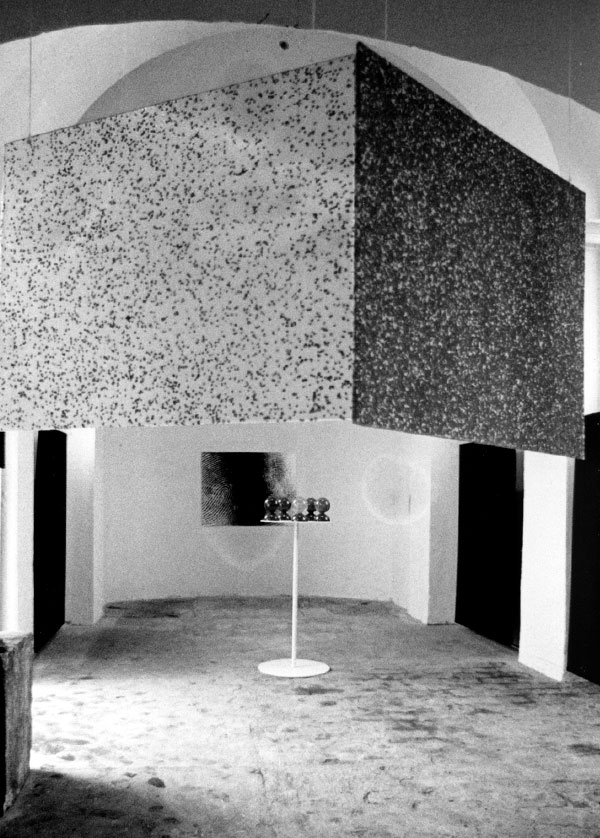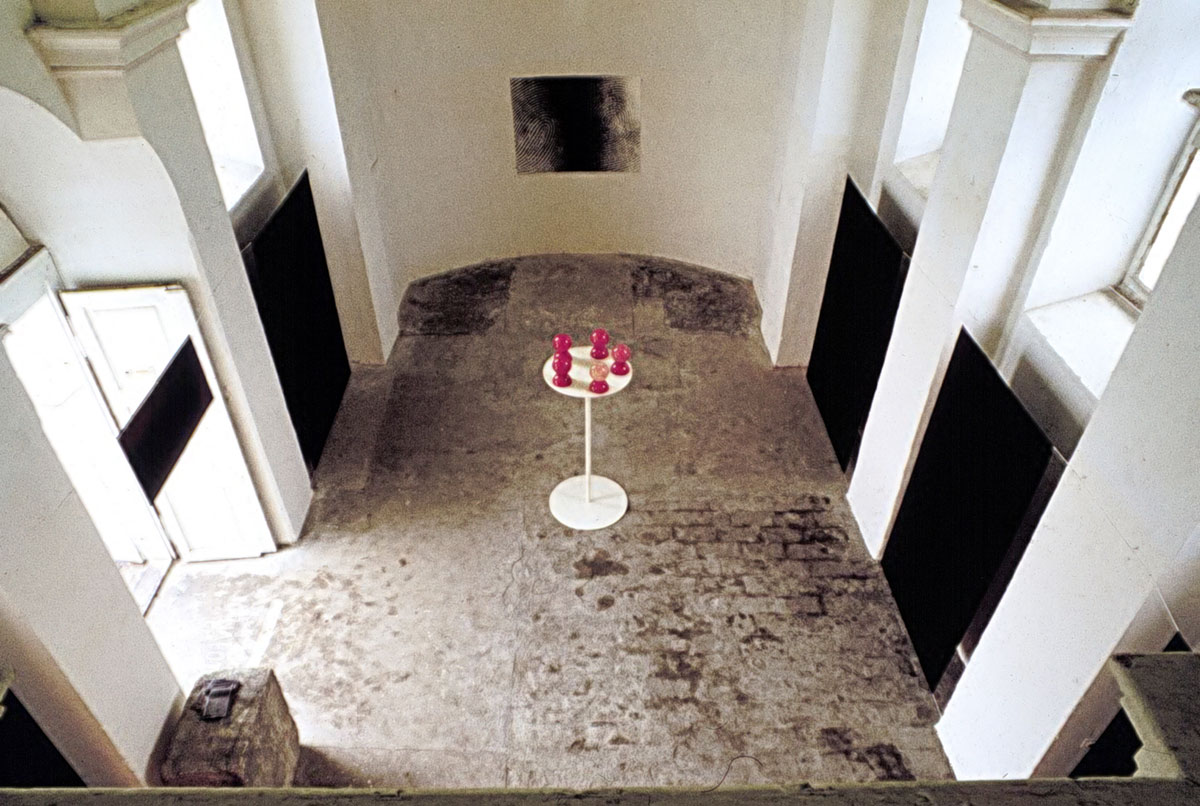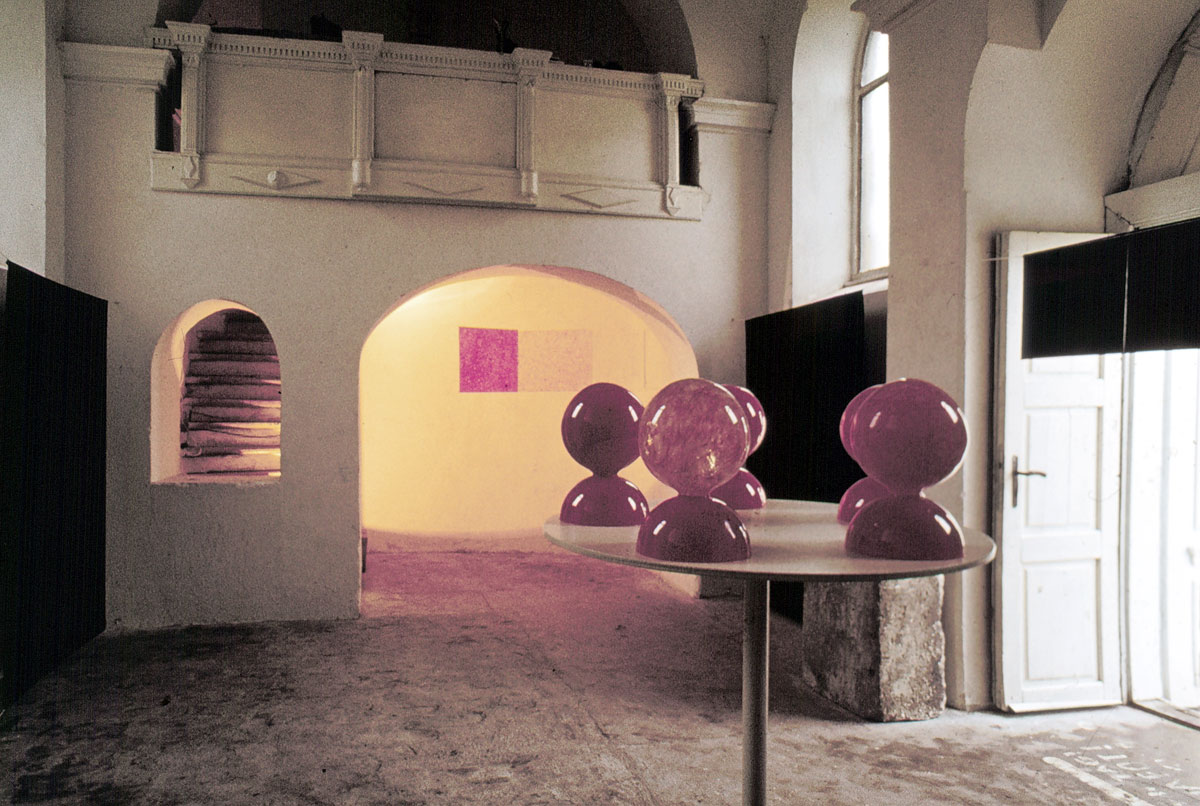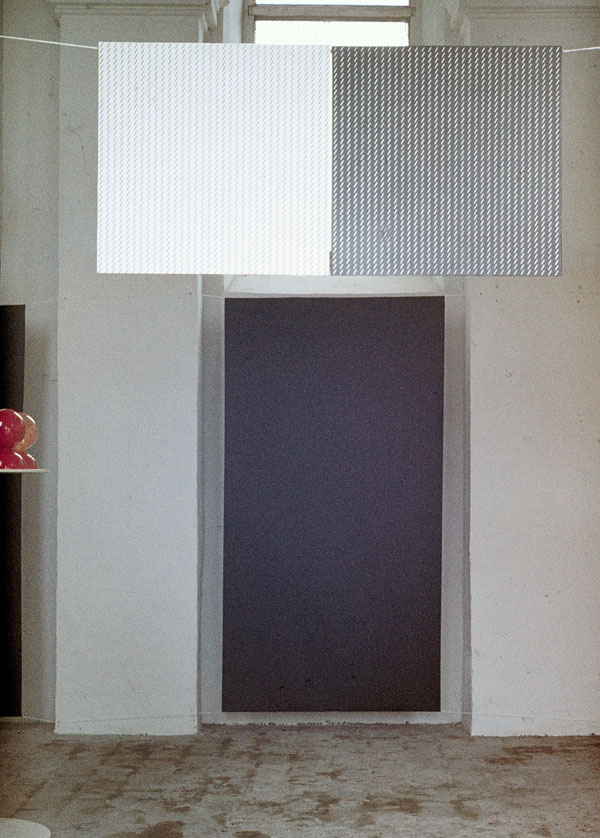
22-23 June 1973 - “Confrontation”
Sándor Csutoros, László Haris, József Molnár V.
László Haris: in ‘73, before the events began in Balatonboglár – as they obviously began in the summer – it could already be seen that official art policy would announce a shift. The freedom, the long leash we were allowed from ’67, or rather from ’68, began to be tightened. As a result of this and due to our creative space being narrowed, in early ‘73 I and two of my friends, Sándor Csutoros and József Molnár V, both of them exhibitors at Balatonboglár exhibitions, decided to organise joint shows. The event was one artwork that the three of us made together. The first venue for this event was at 12 Erkel Street, in Budapest’s ninth district, and we gave it the title Stairwell; the second one was organised in the chapel in Balatonboglár.
For a long time the three of us called this show Requiem for a Chapel; we came up with this when there was still a chapel there. Of course we did not foresee the drastic ending that came later; no one did. What we did see, however, was that the whole thing was heading to an inevitable self-destruct. This is what our requiem was about.
[interview 1998]
Sándor Csutoros: We made a chapel; the chapel was the artwork itself. We approached the chapel as a court of justice and seeing. We used three colours: white /chapel walls, photos, painted rotating metal stand/, black /screens, photos/ and red /plastic figures/.
The inventory of the artwork: 2 suspended photographs each with a dimension of 40x40 cm; copies of the sign “/” in two versions: white on black and black on white; whitewashed chapel walls; 5 black thickly woven screens each with a dimension of 130x200 cm; 2 photographs of details of thumbs enlarged 100-fold; 5 plastic spherical figures each with a diameter of 16 cm on a rotating metal stand painted white, demonstrating the five phases of concentration and rarifaction of red plastic grains in transparent spherical spaces; 2 suspended plastic sheets each with a dimension of 1x35x60 cm, demonstrating the two phases of concentration and rarefaction in transparent flat spaces. (Budapest, October 1973)
József Molnár V.: At the time we wanted to be confronted with the society in which we were living and with the works we ourselves made. We also wanted to be confronted with what our chapel exhibition meant for the audience, the community, and of course for ourselves. After this confrontation the three of us expressly decided to give up pursuing fine art.
What we did at the Technical University and what we did in the chapel were spatial organisation projects. We wanted to, we intended to sacralise the space, and we sacralised it by using objects we had exhibited at other venues. In this project we did not use the chapel as an exhibition hall. We felt that the happenings that took place in the chapel, or at least some of them, desacralized the chapel.
It is all subjective, of course it is, of course. I thought it all sacrilegious. I would have been alright with it all in any other venue but in this chapel. I felt this way because I was religious and still am. And a chapel is sacred to me.
The three of us decided to make the Chapel project to resacralise the chapel. We gave a very strict order to the chapel interior. I took black cloths there, the same kind that were used in our church on Good Friday to cover sculptures and every image with. I wanted to use the cloths I brought to the chapel to cover what had taken place there before. It was a symbolic covering. My way of driving out the evil, if you like. Sanyi Csutoros had his trial around that time and asked Laci Haris to take finger photos of his wife and himself. This was the altarpiece. It was tough because it was an unfair trial. It was part of the doctors’ trial – Sanyi’s wife was a doctor – but they dragged Sanyi into it. We put schematic plastic heads before the photo, also functioning as an altar... figure heads demonstrating rarefaction and concentration.
That was basically the chapel we made. Maybe there were some other things in it too but whoever entered could feel the tight order of the place. We thought long and hard all three times when we put the project together how space could be made tight. Tightening space was not a spatial problem but a spiritual one for us. We did not tighten the space in a physical sense but by creating a spiritual tension using extremely simple tools. And we experienced that when a group of laughing people entered, the moment they stepped inside the chapel their behaviour changed without anyone saying a word to them. This silence was what tightening the space meant. The most important thing in every sacred place is that it is able to change people’s behaviour... if it can inspire people to reach a contemplative state, which is a threshold-like prerequisite for finding inner order. [interview 1998]
24 June – 7 July 1973 - The exhibition and events of László Beke, Miklós Erdély, György Jovánovics, Péter Legéndy, János Major, Gyula Pauer and Tamás Szentjóby.




